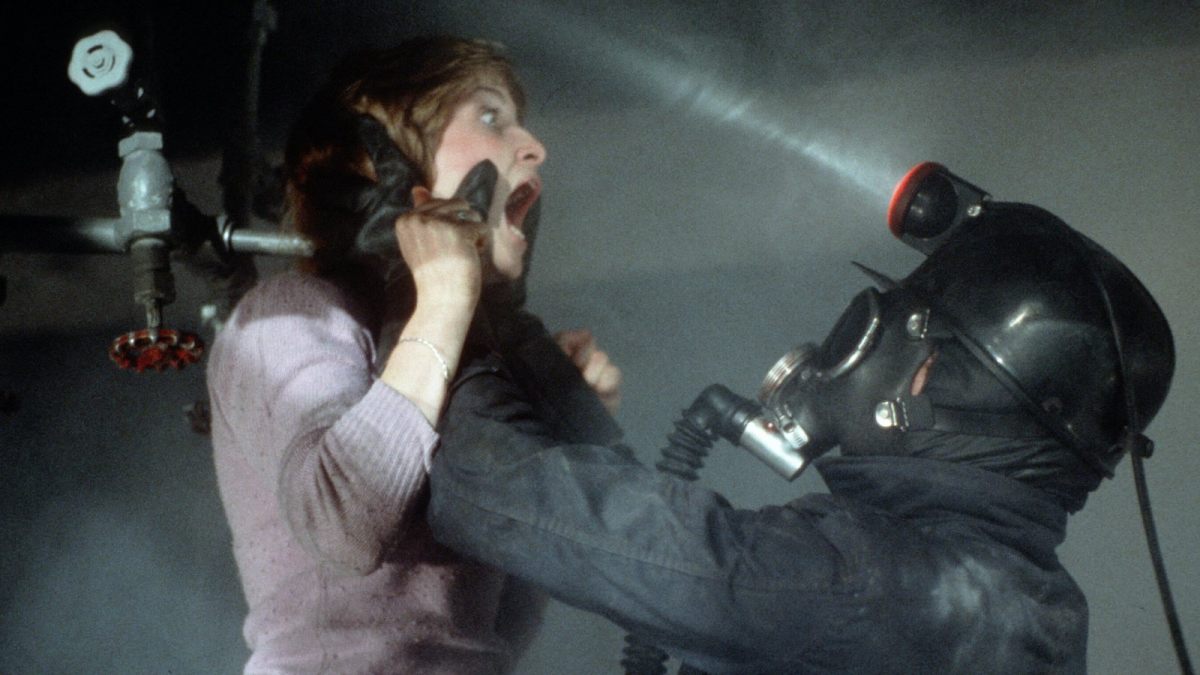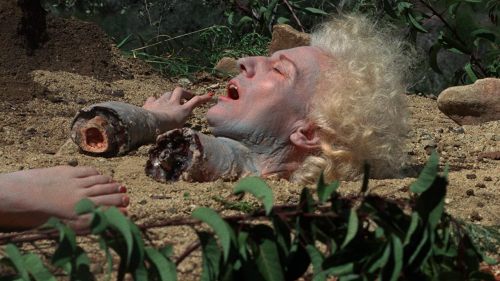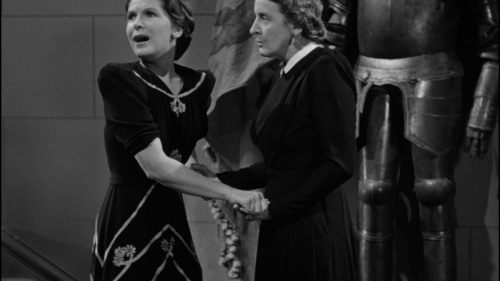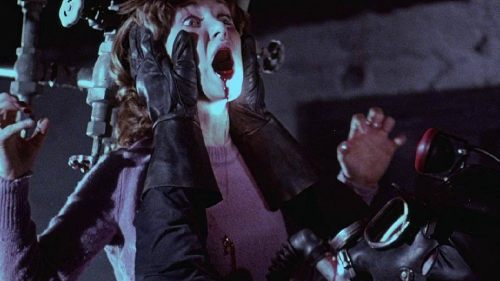Collins’ Crypt: Why I Love The Bonus Features
As someone who has been reading Fangoria since age 11, it's probably not much of a surprise that I would like to know more about the movies I enjoy (and when I don't enjoy them... I am sometimes even more curious). DVDs were a godsend in the early days, when studios would pack them to the gills with bonus features like commentaries and behind the scenes pieces that helped sate my curiosity, and I'd feel downright ripped off when something would come out in a bare-bones package. As I get older I am a bit choosier for the films I deep dive into - I enjoyed Underwater last month, but barring an extensively longer cut I doubt I'll be rushing out to get the disc even if it has a commentary or lengthy production documentary, because there's sadly not as much time for these things anymore, as opposed to 1999 when I would go through the entire disc for the likes of Chill Factor. But for other films, I can't get enough, and will hopefully keep learning new things about it until I've forgotten the old ones and can start the process all over again.
Such is the case with My Bloody Valentine, the 1981 slasher that has always been a favorite in my house since renting it on VHS back in 1994 or so. From the day of their inception, fans have been asking Scream Factory to put out a special edition Blu-ray of the film, which is understandable since the existing one didn't have all that much in terms of behind the scenes info (it didn't even have a commentary) and has been out of print to boot. Luckily, Scream Factory listened, and not only were they able to rope in director George Mihalka and a sizable number of the surviving cast members, but also restore the MPAA-excised footage so that it finally looks as good as the rest of the movie (the previous release had the footage, but in very rough shape). Alas, there are a few bits that are still missing, such as the murders of Harriet and Mike (impaled by Harry with a mining drill as they made love in the mine), and director George Mihalka believes a few others originally had even more blood spray, but when you compare to the R-rated version, it's a huge improvement, and likely the most complete it'll ever get.
But it's a (two-disc!) special edition, so there's also some information as to WHY this footage was so hard to track down and restore. Part of the problem is, alas, Paramount, who clearly doesn't have the best film storage practices (see: the uncut Friday the 13th sequels. Oh wait, you can't) and given that the film was not a box office success it makes sense that they didn't feel the need to preserve everything to the best of their abilities. However, the film's status as a "holiday horror" slasher entry meant that it was an early example of the same sort of thing that plagues major releases even today: working against the clock to finish a film in time for a release date that was set in stone. Apart from having a fantastic musical number, My Bloody Valentine is not unlike Cats in that they exist as proof that working overtime on a film to get it into theaters on a predetermined date can permanently damage the film.

However in Cats' case, the director simply didn't know what he was doing, and that wasn't what was happening here - everyone agrees that Mihalka had a clear vision from the film and executed it well during production, which apparently went quite smoothly all things considered. No, the problem was that they started late (the film was only shot about three months before it was released) and had to have the film ready for its namesake holiday, which meant a rushed post-production process, and that is where the issues with the MPAA began. As is related on Mihalka's commentary and interview, they were submitting the film to the MPAA while they were still editing it and mixing the sound, rather than present a finished film to the censors and do their bidding in a way that would usually mean the excised sequences would exist in whole (with sound) and put somewhere in the hopes they could be put back someday. Instead, they were hacking it up while they edited normal things in the same sequence, making it easy to lose things that they didn't necessarily want to cut alongside the things that no one wanted to see the light of day anyway.
Worse, the MPAA was being obnoxious with them. I forget if it was mentioned on the disc, but in the past they have noted that they were going through this process in the wake of John Lennon's murder, which made their gory deaths an even bigger target for the notoriously conservative ratings board, so it was a bigger battle than they were expecting. The board would tell Mihalka to trim ten frames from a death, and the filmmaker would do that, and then upon resubmission they'd tell him to cut an additional five frames - rather than just tell him to cut fifteen frames the first time. Through these examples, it becomes easy to see why restoring the footage has been such a difficult and still incomplete process - how do you go back and find all of the frames when they weren't even cut at the same time? It would also stand to reason that they found some footage, but perhaps only the 2nd round of trims from a sequence that had to be recut three or four times, making it impossible to put back as it would lack the connecting frames to make it coherent.
The other big thing the bonus features reveal is how much work went into creating red herrings, which struck me as ironic since one of the things that work so well about the movie is that it doesn't waste time trying to make too many people look suspicious when they aren't the killer. In fact, some fans - including myself - were drawn to the film in part because it was a "stealth" whodunit, chalking all of the murders up to an escaped patient named Harry Warden who had a beef with the town; his backstory and presence being not much different than the way Michael Myers or Jason Voorhees are used in their films. Until he is unmasked at the end and (spoiler for 40-year-old movie ahead) revealed to be Axel, there's no real reason to believe that it's anyone but Harry committing the murders. Compare that to the remake, which establishes Harry's death relatively early and is clearly set up as a traditional whodunit, resulting in people making shady eyes for no real reason once everything is laid out and you know they had nothing to hide.

For 25 years I assumed this was a clever approach on Mihalka and screenwriter John Beaird's part, to give the film a Madman Marz/Cropsey-esque local legend as the killer and then work in a surprise twist at the end, giving us the two bits of key information after the fact (one that Axel's dad was killed by the original Harry, and two that Harry had indeed since died in the hospital) in an organic way that doesn't feel like a cheat, nor does it take forever to explain like the shrink at the end of Psycho. But to hear it from Mihalka and the cast, it was a full-on mystery in the vein of Scream or Prom Night, with the actors unsure who the killer was and only knowing it wasn't them if they had a death scene that would rule them out.
For example, when the town Chief investigates a murder, he sees a paper heart that has been turned upside down, presumably by the killer. Well, eagle-eyed viewers will notice that the minor character of Tommy had been scolded by the Chief in an earlier scene for playing with the decorations - this is something Mihalka worked in to get us thinking maybe Tommy was the killer. But I never made this connection, myself - did you? And the actors were denied the final few pages of the script, to preserve the mystery and let them play their roles as if they were perhaps the murderer (to be fair, a number of named characters do survive, so it would work for about a half dozen actors), though again I don't really see much evidence of this in play. Apparently even the actor playing Axel was never told (a stuntman named Peter Cowper played the killer), though he claims to have figured it out early on when they sent him to get a mold made of his arm for the final scene where Axel cuts it off in order to free himself (a scene that is impossible to understand in the cut version, natch).
So it's an interesting takeaway, with regards to what you learn from bonus features. Hearing the full story on the film's "My 'Bloodless' Valentine" history opened my eyes to something that's bugged me for decades, making me glad I took the time to watch the supplements... but I also learned that I was apparently never supposed to believe that it was Harry Warden all along, because the director and actors were finding ways to play up the mystery. I wouldn't say it ruined the movie for me or anything; in fact I'm kind of curious to watch it again with that in mind, to see if I can find any other clues or possible red herrings that never once registered because I wasn't looking for them. No, it's more just a reminder that you can always learn more about something, and it's good practice to keep your brain active. I am increasingly dismayed at the lack of curiosity people display these days; it's never been easier to look something up thanks to smartphones, and yet people remain ignorant of the most basic things (raise your hand if you saw someone think "impeachment" meant "removal" in the past few weeks) but have no problem presenting their opinion on them. I hope I never end up like them; whether it's a slasher movie's production woes or something more important like the future of the world, I never want to stop learning more. Embrace knowledge in all forms!



